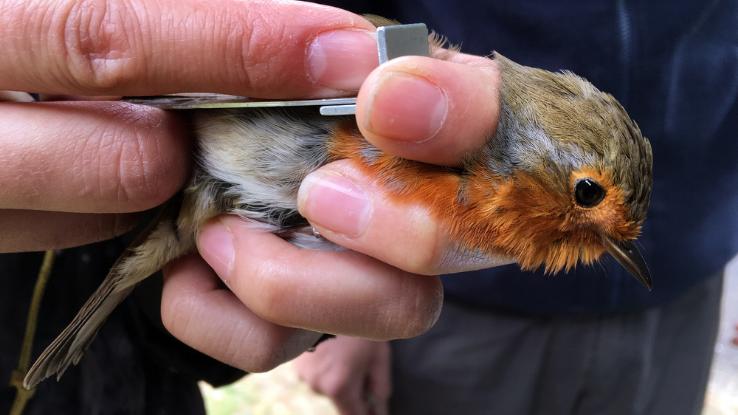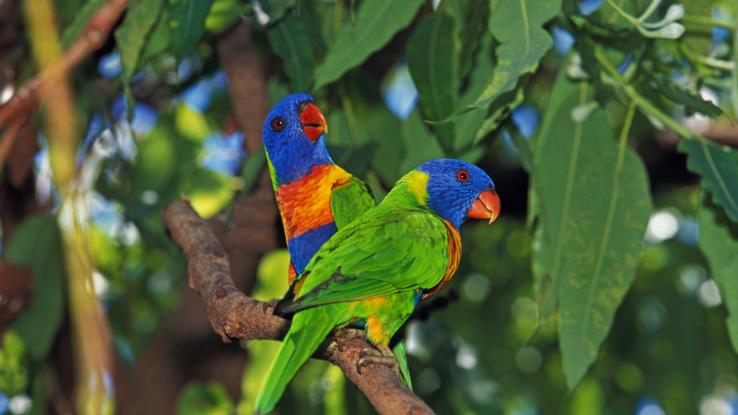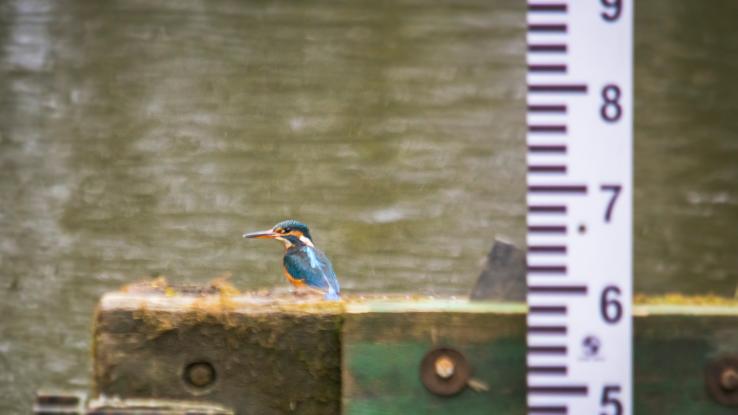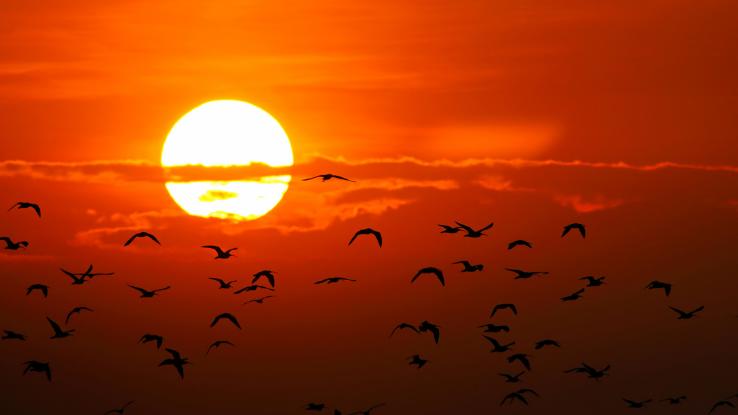Here’s How Birds Across the World Are Adapting to Changing Climates

All over the world, humans and animals are adapting their habits and homes in response to the ever-changing climate. Humans are upgrading their infrastructure, and many are adjusting their habits to lower their carbon footprints. Animals are adapting to the climate in ways that are conducive to their survival. This has affected everything from the timing and routes of their migrations to their mating patterns and living spaces.
In addition to all the ways animals’ behaviors are affected by climate change, their bodies are beginning to show physical changes, too. Across the world and in multiple ways, birds are showing evolutionary signs that could be responses to Earth’s changing climate. Recent studies that looked at birds from the Amazon, Australia, the Arctic and Chicago, IL, have demonstrated there may be potentially rapid evolutionary changes taking place in the birds researchers observed.
What’s striking about the findings isn’t so much about a debate around evolution taking place. Evolution is a way to combat potential extinction — an often necessary survival tactic. Instead, it’s the rapid speed of these evolutions and the big changes they’re creating that may be cause for concern. Evolution doesn’t happen overnight the way it might in video games and other media. These recent findings about birds evolving due to climate change highlight how urgent it is to tackle the issue. Let’s take a look at what changes are happening and what they could represent for animals everywhere.
Birds’ Beaks Are Changing in Australia and Elsewhere

According to research published in the journal Trends in Ecology & Evolution, scientists have begun finding that birds may be growing longer beaks and legs to adapt to climate change. Researchers at Australia’s Deakin University examined physical changes in over 30 species of birds by analyzing data from 100 previous studies that looked at those species. The team also looked at collections of bird specimens preserved in museums. The data that Sara Ryding et al., the authors of the study, looked at date back to 1871 — that’s 150 years of research.
The study’s most striking finding was that bird beaks are getting longer, perhaps due to climate change. Parrot beaks were used as an example. The team’s analysis reported an increase in beak surface areas of 4–10%. Using collections from museums, the team also discovered that the wingspans of bats increased by 1%. The changes might seem small, but if this trend continues, in the coming years birds (and other creatures) will look much different than they do today.
Previous studies have shown that birds grow longer beaks to adapt to bird feeders. The growth helps birds survive and gain more strength because it improves their ability to eat from these food sources, so seeing increasing populations of birds with bigger beaks that aren’t necessarily related to bird feeders is rather alarming. Birds may be struggling to find food sources due to ecosystem changes driven by Earth’s changing climate. Scientists can’t ask the birds if that’s why they’re evolving, but looking at the changes in the animals’ habitats — and their bodies — can show that this is a climate-related issue.
These conclusions were reached in part thanks to Allen’s Rule, a principle coined in 1877 by the zoologist Joel Asaph Allen. In relation to the size of an animal’s appendages (legs, paws, beaks, etc.), Allen’s Rule states that warm-blooded animals in colder climates evolve to have shorter appendages. The reverse is also true — warm-blooded animals living in warmer climates develop larger appendages — and that’s what scientists are seeing in birds and other animals today. The birds’ aren’t moving to new habitats though; their current habitats are warming up as a result of climate change, which is what’s causing their bodies to evolve.
Birds Are Shrinking in the Amazon and the U.S.

Bergmann’s Rule, a principle similar to Allen’s Rule, states that the climate a warm-blooded animal lives in can also dictate its size. According to Bergmann, warm-blooded animals will become smaller in warmer climates and bigger in colder habitats. It’s harder for smaller animals to warm themselves in the cold. Many animals develop thicker coats and put on weight to make it through winters. Scientists today are seeing this principle play out through evolution.
In a November 2021 study published in Science Advances, authors Vitek Jirinec et al. found evidence of Bergmann’s Rule developing in the Amazon rainforest. This team looked at 77 different species of birds and found that all of them had begun to show lower mean averages in terms of their size since the 1980s. Dealing with warmer weather, less rain, deforestation and other effects of climate change appears to be causing birds of the Amazon rainforest to shrink.
The phenomenon is happening outside the Amazon, too. It may even be happening in your own backyard. In a study originally published in Ecology Letters in 2019, Brian C. Weeks et al. reported findings similar to Jirinec and Ryding’s studies. Their evidence suggests that warming temperatures since the early 1980s may be contributing to overall reductions in birds’ body sizes while also spurring increases in their wingspans. It’s possible the birds aren’t growing as much because their bodies need to stay cooler now than they did before their climate changed. The wingspans — wings are also appendages — also seem to demonstrate the evolutionary intent of keeping birds cooler in warming temperatures.
Climate Change Could Trigger Massive Evolution Shifts

Have you ever sat back and wondered how so many different sizes and colors of birds came to be? Scientists believe that these developments might all trace back to climate change. In terms of the birds we know today, it is believed that they evolved during a massive cooling period that took place 91 million years ago. The event had birds migrating to different parts of the world to escape colder climates.
Until major action occurs, we’re going to be seeing more evolutionary trends like this as animals adapt physically to survive climate change. This can lead to odd phenomena like elephants with massive ears and mice with longer tails. It can also degrade ecosystems and cause species’ extinction. What if shrinking birds aren’t able to access their food sources as they change shape? Some may adapt — and some may disappear altogether.
Of course, this could partially be nature taking its course. Birds evolved during major cooling periods; now things are heating up, and they’re starting to change again. The climate is shifting faster than predicted, however, and as a result, so are many species of birds. But this only means they’re managing to survive, not thrive. It’s an important distinction that could play a role in their continued existence — and a reminder that it’s important we take action now to slow climate change before it’s too late.





